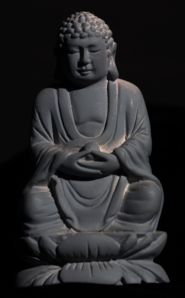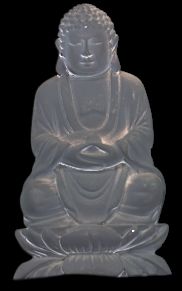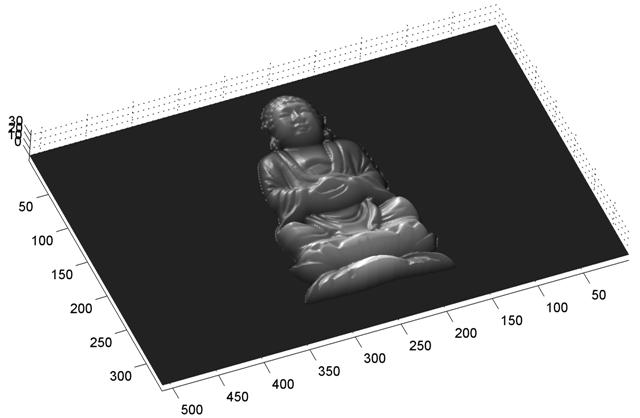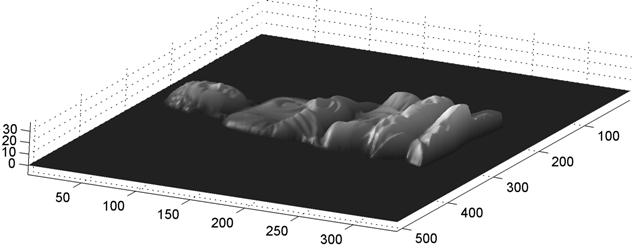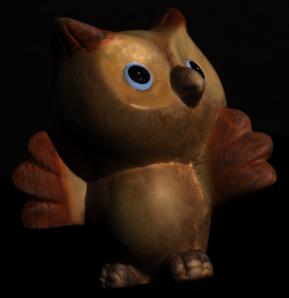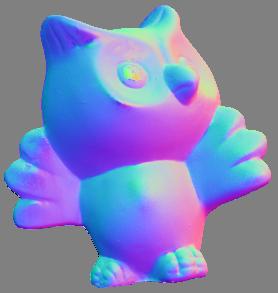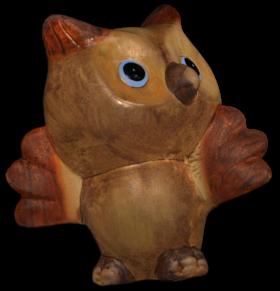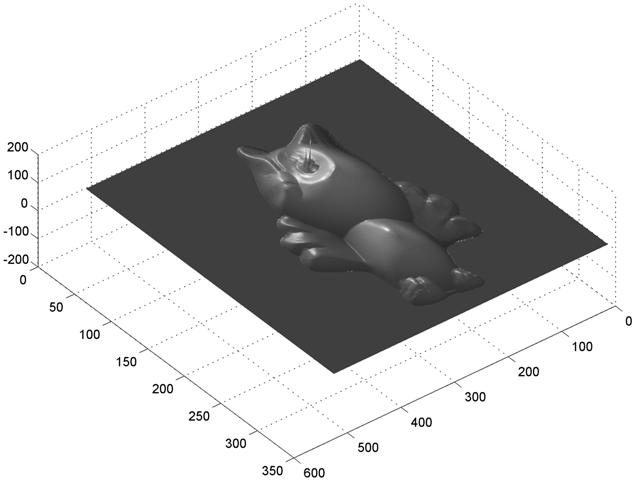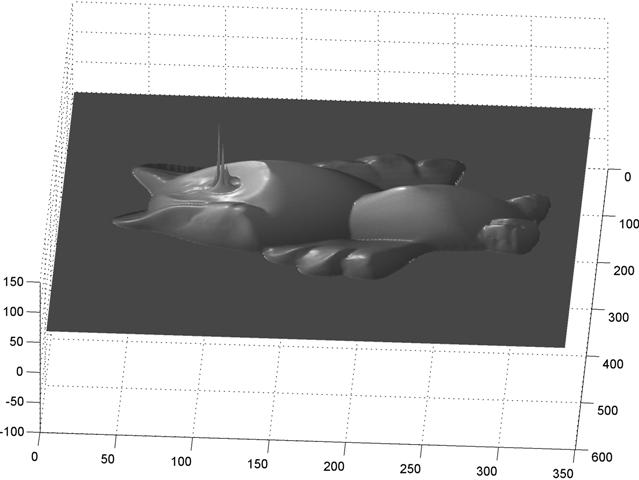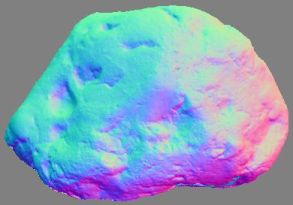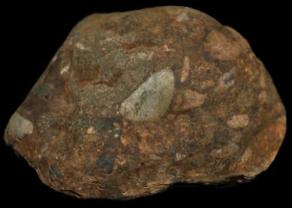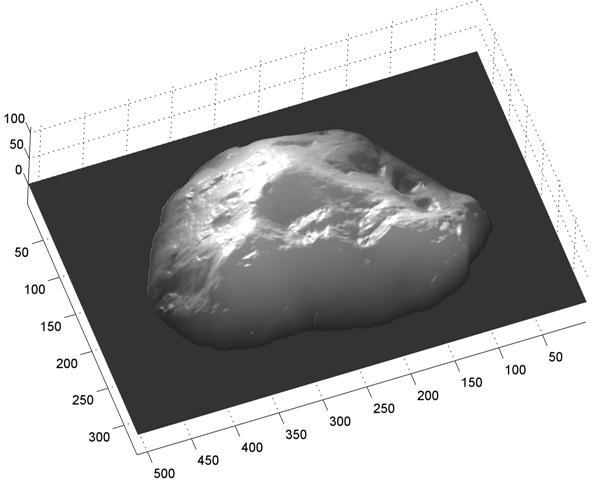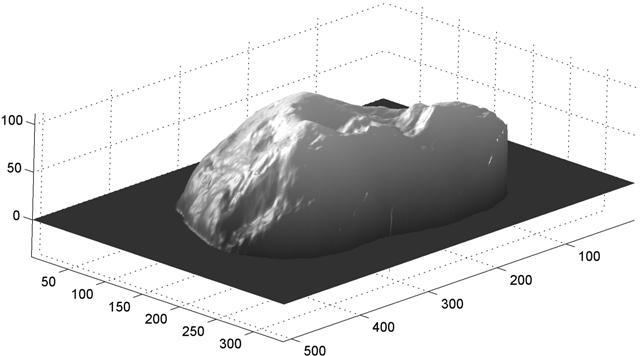The provided images for this project are given in .tga format. Matlab, the program used for this project, does not handle this image format, so the images needed to be converted to a usable form. The Able Batch Converter was used to convert all of the images from .tga into .bmp format, which is an accepted image format in Matlab.
2) Calibration with chrome sphere
Calibration is performed on the chrome sphere to determine the light vectors for each of the twelve lighting cases. The first step is to determine the parameters of the sphere, which are the centroid and the radius. To do this, the mask image of the sphere, chrome.mask.tga, is used to create a binary image by thresholding the RGB image such that an intensity of 128 or above was assigned a 1, and any intensity below 128 was assigned a 0; this made the sphere white and the background black. From this binary image, the centroid of the sphere was calculated to be at (254.2, 148.7). The radius of the sphere was found as the distance from the centroid to the edge of the sphere determined with a simple gradient calculation. The radius was found to be 120.1 pixels.
The lighting images of the chrome sphere were used to determine the light vectors. First the images were thresholded to form a binary image to isolate the highlight. The centroid, (xh,yh) of the highlight was then found, which is where the light vector hits the sphere. The surface normal unit vector at the centroid point is then found using the following equations:
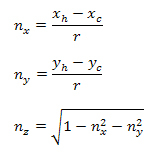
At the location of a highlight, the reflected light, R, of the highlight is assumed perpendicular to the image sensor of the camera, which leads to the following geometric relationship:
Being perpendicular to the camera, R is defined as <0,0,1>. This relationship allows us to solve for the lighting vector in each of the twelve cases.
3) Solving surface normals
Knowing the lighting vectors in each case, we can find the surface normals for each pixel of the object. Assuming a camera response function of 1 and a light source intensity of 1, the following equation relates the pixel intensity of a single color channel, I, to the lighting vector, L, albedo of the color channel, kd, and surface normal vector, n:
The unknowns in this equation, surface normal and albedo, are lumped into one term and substituted into the previous equation
The quantity g is then solved for byusing a least squares solution intended to minimize the objective function.

We can recover n by making g a unit vector, effectively dividing by kd. Each color channel can provide a surface normal, so the normal used for the project image was derived from a grayscale of the image in an effort to “average” the RGB surface normals.
4) Solving for color albedo
Now that the surface normal for each pixel is found, we need to determine the albedo at each pixel for each color channel. We aim solve for the albedo which minimized the objective function:

This is done by differentiating the objective function and solving for kd, giving the following equation to compute the albedo for each pixel.

5) Least squares surface fitting
The surface normals give us knowledge of the curvature of the object’s surface and from this information, we can estimate the shape of the object. First estimate a vector parallel to the surface at each pixel and thus, perpendicular to the surface normal. To do this, we assume that a vector between two neighboring pixels is parallel to the surface, given by the following equations for both x and y directions.

Since the vectors vx and vy are both perpendicular to the normal, the dot product between each vector and the normal will zero, giving us the following relationships:

This relationship can be written in matrix format for every pixel on the object, giving:
Mz = v
However, the M matrix is very large; if n is the number of pixels on the object, the matrix is of dimension 2n-by-n. For this reason, sparse matricies are utilized to store the information using less memory by omitting the zeros and only storing the actual data points. The matrix equations are then solved for using a least squares solution, which provides the depth matrix of the object.
Implementation
The algorithm was implemented in MATLAB using these scripts:
calibration.m – Solves for the centroid and radius of the chrome sphere. Solves for the lighting vectors of the chrome ball calibration images.
normal.m – Solves for the surface normal of the grayscale image. Composes the RGB-encoded normal map
albedo.m – Solves for the albedo of each RGB color channel. Composes the albedo map.
fit_surf.m – Solves for the depth matrix for the object using sparse matricies.
